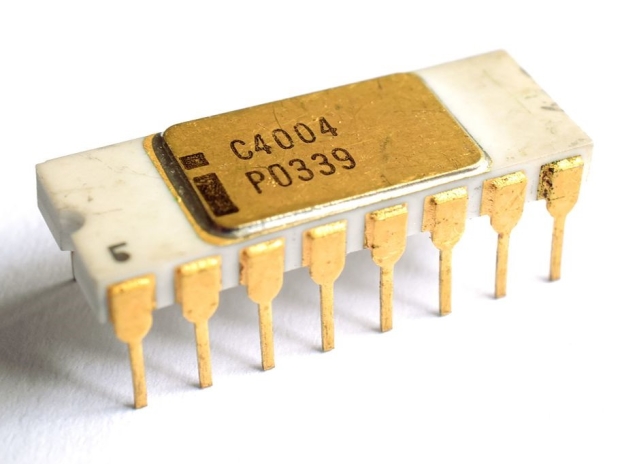The microprocessor moved humany from dependence on IBM mainframes were kept in sealed rooms and were so expensive companies used argon gas instead of water to put out computer-room fires.
This meant that workers had to evacuate on short notice, before the gas would kill them – great days.
Operators had to feed decks of punch cards into a reader and typing simple commands into clunky Teletype machines. DEC sold PDP-8 minicomputers to labs and offices that weighed 250 pounds.
In 1969, Nippon Calculating Machine asked Intel to design 12 custom chips for a new printing calculator. Engineers Federico Faggin, Stanley Mazor and Ted Hoff were tired of designing different chips for various companies and suggested instead four chips, including one programmable chip they could use for many products. Using only 2,300 transistors, they created the 4004 microprocessor. This meant that four bits of data could move around the chip at a time. The half-inch-long rectangular integrated circuit had a clock speed of 750 kilohertz and could do about 92,000 operations a second.
Intel introduced the 3,500-transistor, eight-bit 8008 in 1972; the 29,000-transistor, 16-bit 8086, capable of 710,000 operations a second, was introduced in 1978. IBM used the next iteration, the Intel 8088, for its first personal computer.




